What is the Syzygy Astronomical Observatory, and who is behind it?
The Syzygy Astronomical Observatory is being built by Dan and Jeannie Charrois on the outskirts of the town of Legal, Alberta, in Canada. It is a private, non-profit endeavour. The name comes from our company, Syzygy Research & Technology Ltd. And the word “Syzygy” itself is an astronomical term, referring to an alignment of three or more celestial bodies. If you’re not sure why an alignment requires at least three objects to be significant, think about it a bit.
Why build an observatory?
An obvious question probably comes to mind to most people. Why are we privately funding the construction of a relatively large, research-class astronomical observatory in Legal, Alberta? To understand this, you’ll have to understand a bit of my (Dan Charrois’) background as well.
Ever since I was young, growing up under relatively dark skies on a farm near Legal, Alberta, I have been endlessly fascinated by the night sky. Over time, that curiosity grew stronger, as I experimented with astrophotography, and took every opportunity I could to learn more about the universe and how it works.
While attending the University of Alberta to get my degree in Electrical Engineering (Computing stream), I had two incredible experiences to work directly in the field. The first was working with the solar radio group at the Dominion Radio Astrophysical Observatory (DRAO) in Penticton, BC in 1992, working with Ken Tapping. The solar radio program continuously monitors radio emissions from the Sun at a wavelength of 10.7 cm, known as the solar radio flux. It was discovered back in 1947 that the radio emissions at this wavelength correlated strongly with the level of solar activity and sunspots, and the solar radio flux has since been well established as a measure of solar activity.
I was involved in projects ranging from writing software to detect in real time when solar flares are happening, helping to construct a second solar radio telescope, and undertaking a study to determine whether the twice daily measurements of 10.7cm flux were in fact undersampling the true nature of 10.7cm emissions. That study resulted in the co-authoring of my first peer-reviewed research paper, Limits to the accuracy of the 10.7 cm flux, published in the March 1994 journal “Solar Physics”. Finally, I was contributing to the scientific community in a field I was deeply interested in!
The following year, I worked as a software developer for the Canadian Space Agency in Ottawa, Ontario. I developed software to allow scientists to view and visualize data representing winds, temperatures, and emission rates by using Doppler interferometry of spectral lines of airglow in the upper atmosphere (mesosphere and thermosphere). It was part of a Canadian experiment on the NASA’s Upper Atmosphere Research Satellite (UARS) called the Wind Imaging Interferometer (WINDII).
A secondary project I had at the Canadian Space Agency was to digitize and organize film negatives taken by Marc Garneau on Shuttle Mission 41-G, which were high spectral resolution images taken of the shuttle orbiter glowing faintly as it impacted with atomic oxygen and hydrogen surrounding the Earth at orbital speeds (the OGLOW experiment). This was the mission where the first Canadian astronaut ever travelled to space, so the significance wasn’t lost on me. Especially when I had a surreal moment while visiting Ottawa’s Science and Technology Museum where they had a display case describing the details of Canada’s first mission to space, including little wooden replicas of the film canisters that Marc Garneau used. I had the real ones in my desk.
During this time, I also took several years to develop commercial astronomy “planetarium” software, called The Digital Universe. Groundbreaking in its time, it provided a simulation of all known objects in the universe to an unprecedented level of detail and accuracy. I even extended the current (at the time) analytic algorithm for determing the position of the Moon (ELP2000) by performing a detailed harmonic analysis of the results from NASA’s DE200/LE200 multiple-body numerical integration algorithm that I computed, resulting in very comprehensive formulae for Keplerian elements to provide sub-meter lunar positional accuracy over the next century (which proved to be very useful for those involved in observing lunar grazing occulations). The software has been used by everyone from astronomy enthusiasts to professional astronomers. It was the core software used in groundbreaking studies as diverse as analyzing the atmosphere of Pluto’s moon Charon, determining not only when certain pyramids in Egypt were built, but how long it took to do so, and identifying and dating the world’s oldest solar eclipse recorded in stone.
After that, life took other directions. Amongst other projects, our company Syzygy Research & Technology launched ExamBank – an online resource for kids from Kindergarten to Grade 12 to write practice tests in all their academic courses, with curriculum-aligned questions developed by teachers. Starting as a resource for Alberta students, it has since expanded to BC, Saskatchewan, and Ontario, now also includes a Trades ExamBank relevant to trades apprentices across Canada, and has become the main focus of our business.
Throughout this time, I’ve also become involved in other activities such as becoming active in the aviation community as a private pilot and building my own airplane, as well as organizing COPA For Kids / Discover Aviation events at the Westlock Airport, taking (to date) nearly 1000 kids up for free flights in aircraft. I’ve even helped my daughter by composing the music for the songs in two musicals she wrote – Fool’s Gold (now available on Spotify and other streaming services) and The Spotlight’s Shadow (streaming coming soon!), which were performed at the Edmonton Fringe Festival in 2024 and 2025 respectively. We’ve also become avid eclipse chasers, having gone to see total solar eclipses in Idaho (2017), Antarctica (2021), Australia (2023), Québec (2024), and hopefully many more to come! But though my involvement in the astronomical community has waned in recent years, we’ve decided that it’s time to finally do something about our dream to be able to start contributing to scientific knowledge in the field once again. We’ve been planning on building an observatory for more than 20 years, and the time has come to do something about it!
Why build the observatory in Legal, Alberta?
The simple reason is because that’s where we live! But there is more to it than that. When we bought the land, we specifically tried to find a location relatively shielded from brighter light pollution. The light pollution from Legal itself is pretty minimal, though Edmonton to the south (about 35 km) is by far the biggest culprit. On the Bortle scale of light pollution, our location is roughly Bortle 4 – brighter rural, with a naked eye limiting magnitude of 6.3-6.5 for those with younger eyes than mine.
Honestly, it sometimes seems that one of the biggest contributors to “light pollution” here washing out the fainter objects is the aurorae, particularly when the Sun is more active (though many people wouldn’t consider that a detriment). Since we’re in a fairly northern town in Canada, we do see the aurora borealis often.
The photo collage below shows the sky conditions at the observatory site. You can click on the picture to see a higher resolution version. The photos are unfiltered and were taken at ISO 4000, with a 20 second exposure, f/5.6, and a 14mm lens. You can see the aurorae to the north (as I mentioned, we get it here often) as well as the sky glow caused by Edmonton to the south. Filters and digital photography processing techniques can be used to reduce the effects of light pollution to the south, but in other directions the sky is relatively dark.
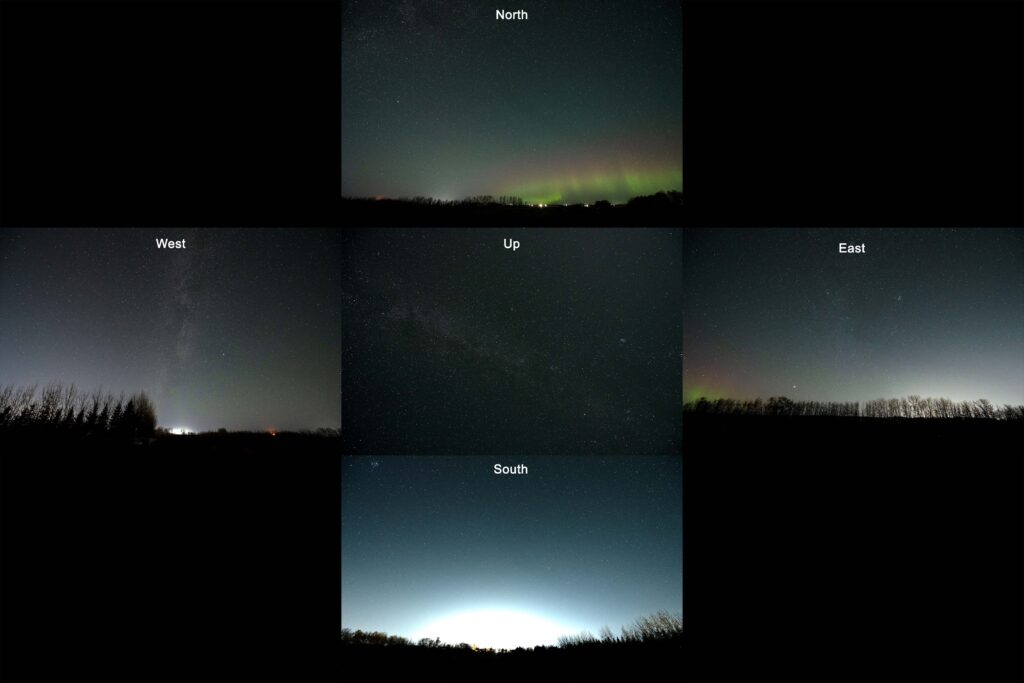
And for those curious about the town, Legal is an awesome place to live, with a mix of rural friendliness where people know and talk to each other on the street, but less than a half hour drive to the bigger amenities found in the city.
How big is the observatory, and what equipment will be installed?
The observatory is a three story structure, about 1000 square feet on the ground level, with a 14.5 foot diameter dome on the upper story housing the main telescope. The telescope is a PlaneWave CDK600, comprising a 24 inch f/6.5 Corrected Dall-Kirkham design with a flat field across a 70 mm image circle. It is mounted on a L-600 direct drive mount with zero backlash and periodic error, capable of <10 arcsecond pointing accuracy, 2 arcsecond pointing precision, and 0.3 arcsecond tracking accuracy without guiding.
To my knowledge, this will be the largest fixed telescope in northern Alberta.
The following photos are not mine, but pictures that others have taken with the same model of telescope, to show what the telescope will be capable of. When the telescope is fully operational, I will be providing a gallery of photos taken with our telescope specifically.
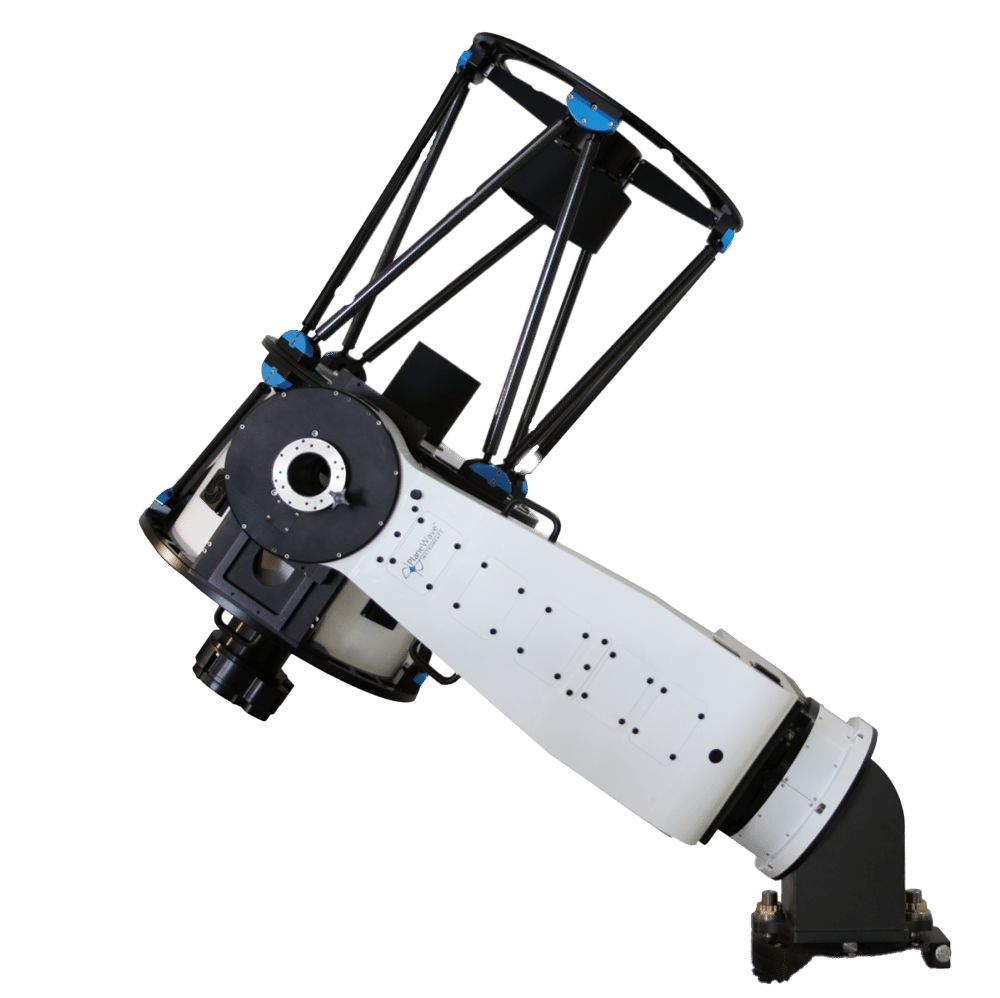
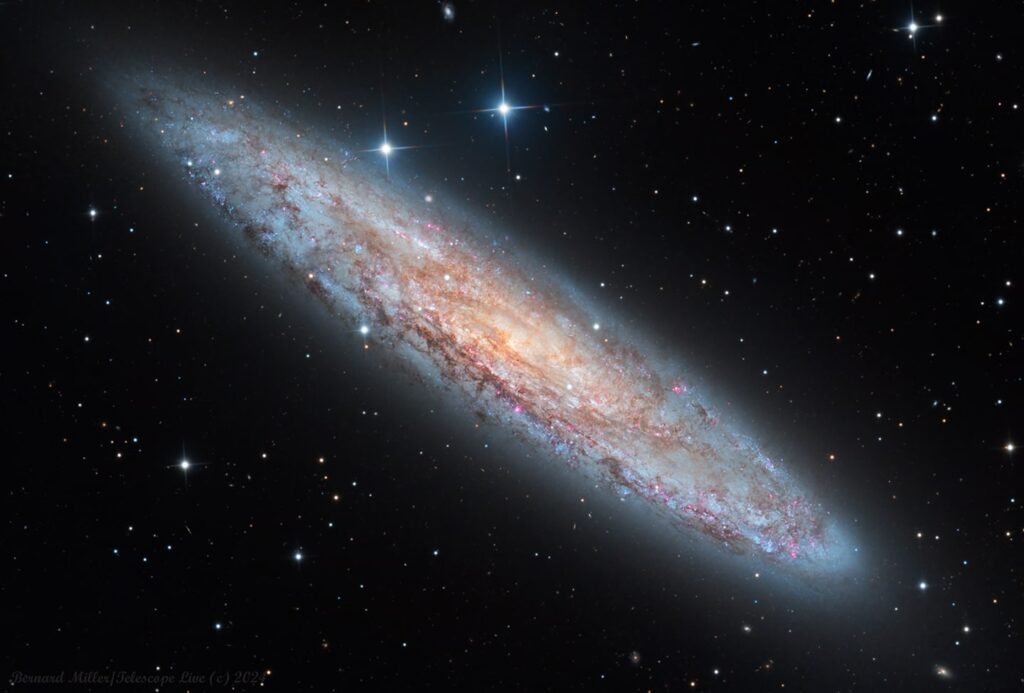
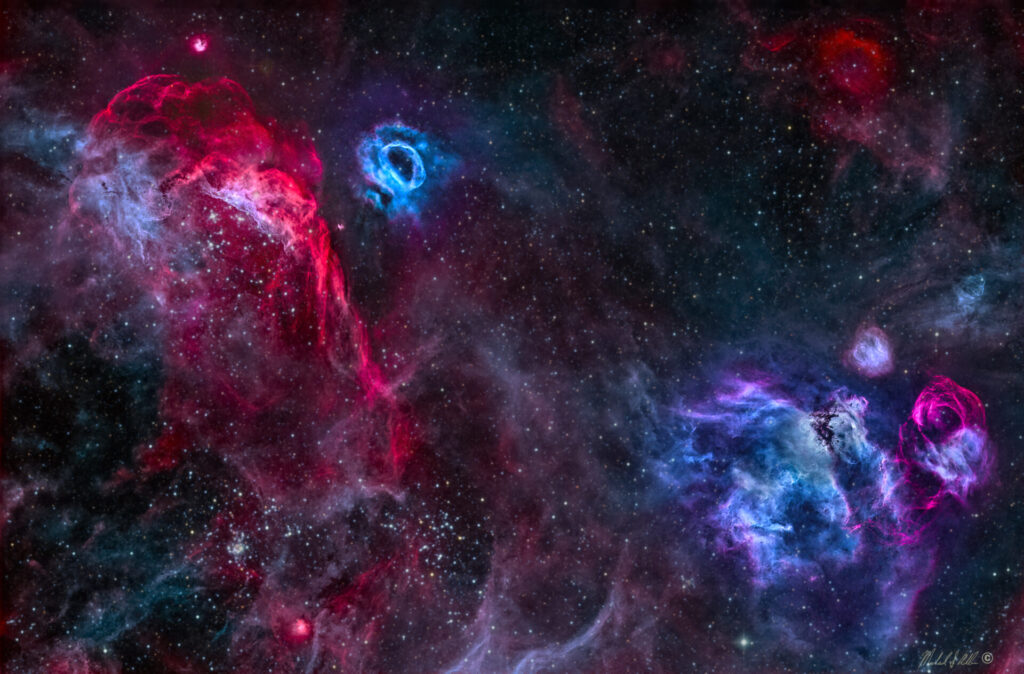
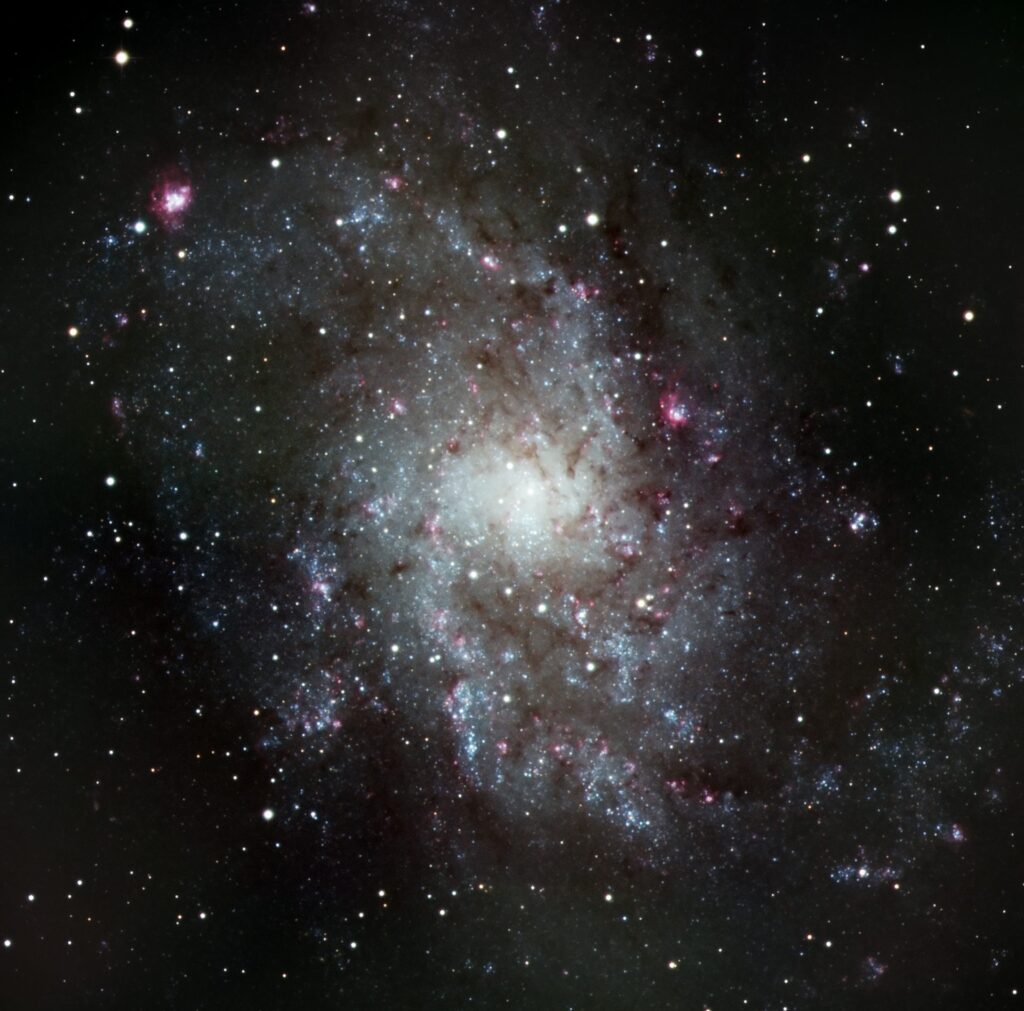
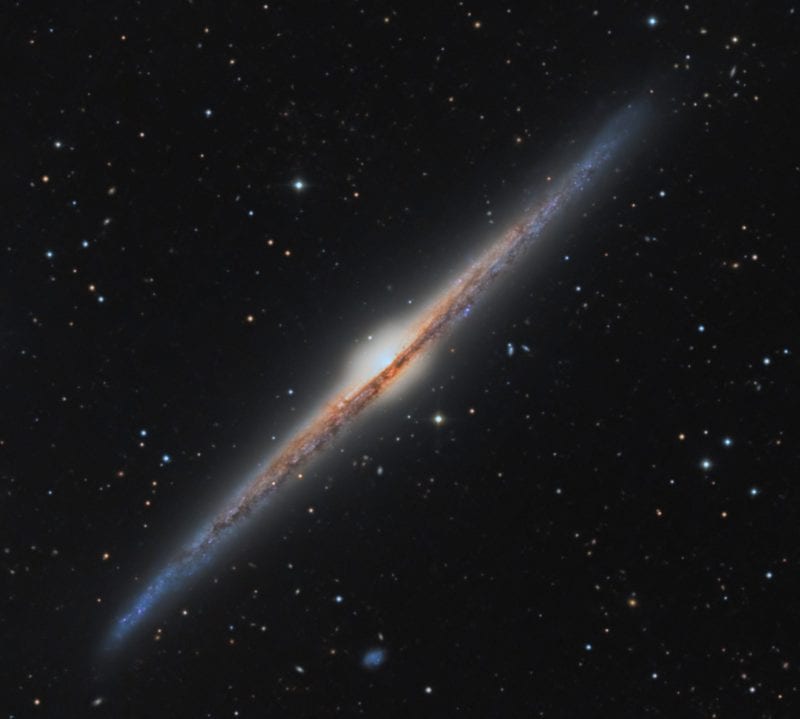
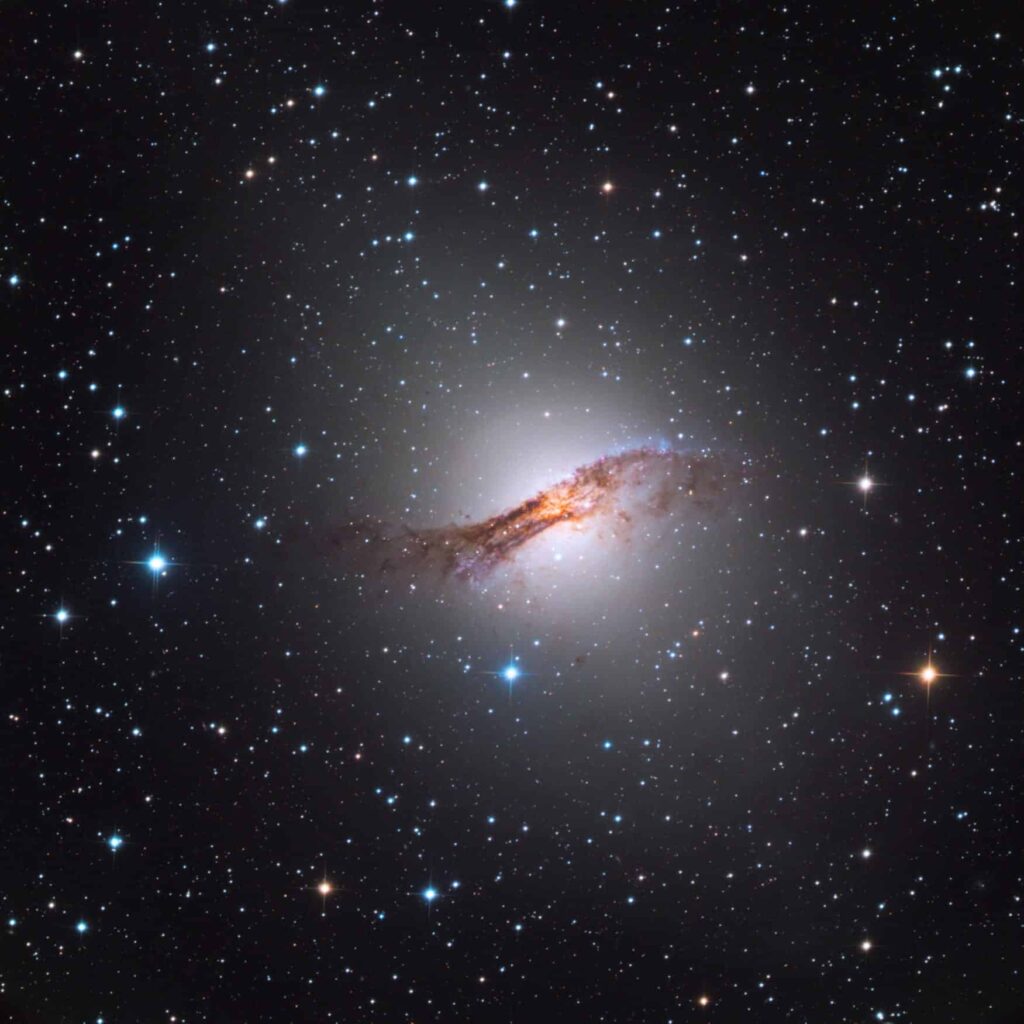
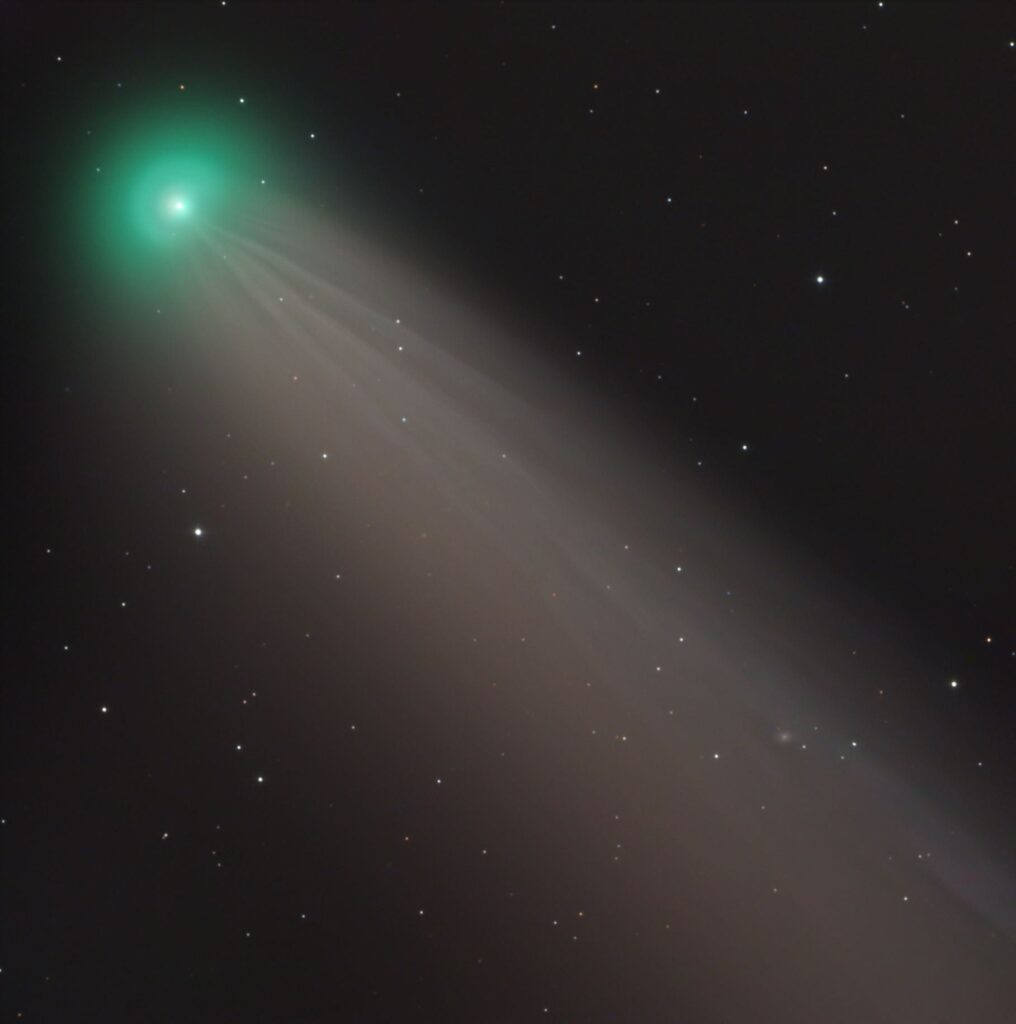
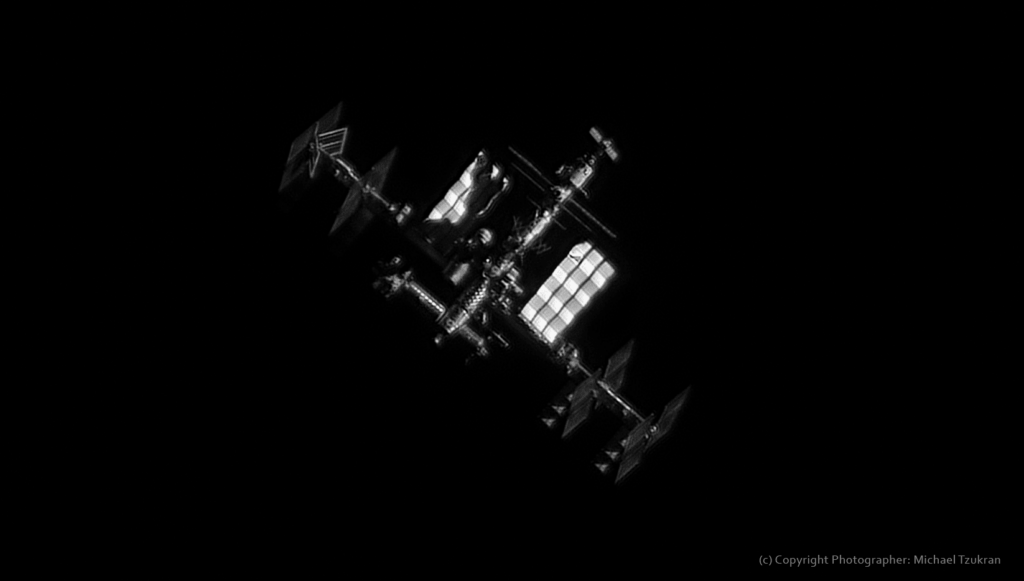
I am still evaluating various options with regards to cameras and other equipment to be used with the telescope.
Other instruments (aurora cameras, meteor cameras, solar telescope, magnetometers, etc.) are expected to be installed over time. And perhaps we might eventually start experimenting with radio astronomy, bringing things full circle to my time at DRAO.
How will the telescope be used?
In addition to traditional (ie: interactive) use, the telescope, dome, and observatory will be fully automated. So when it isn’t being used manually, so long as the weather is acceptable, it will continue to be operating throughout the evening, imaging objects automatically that are queued and priotized according to visibility, urgency, and other factors.
With my background in writing astronomical software that priotized high accuracy in positional measurements, astrometry (the science of precise astronomical measurements) is a large interest of mine. So one of the big jobs of the telescope is going to be to help refine the orbits of known asteroids, and perhaps discover new ones! I’d also like to try my hand in photometry – the precise measurement of the brightness of objects, which can be used to help determine the nature of the variability of certain stars, analyze the behaviour of novae and supernovae, etc. Perhaps the equipment might even be successful at transit photometry, which is measuring the very small brightness fluctuations in stars as planets cross their disks, which can be used to detect extrasolar planets – planets orbiting around other stars.
When things are fully operational and tested, I also plan to subscribe our equipment to alerting services so that when discoveries are made at large professional observatories, followup observations of objects can be quickly made automatically, enhancing and supplementing the data astronomers will be able to use.
Will it be accessible to the public?
I am open to providing remote access to the telescope to grad students to support their research, and may offer access on a subscription basis to amateur astronomers interested in imaging objects with the equipment.
For physical visits to the observatory and “in person” observations through an eyepiece, I have always loved to share my interests with others (like I do with organizing Discover Aviation events with kids). So though the observatory is privately owned and operated, I’m hoping to hold periodic “astronomy nights”, host school visits, etc. Though the observatory and telescope are not operational yet, if you would like more information, please feel free to email us at info@astronomy.ca.
